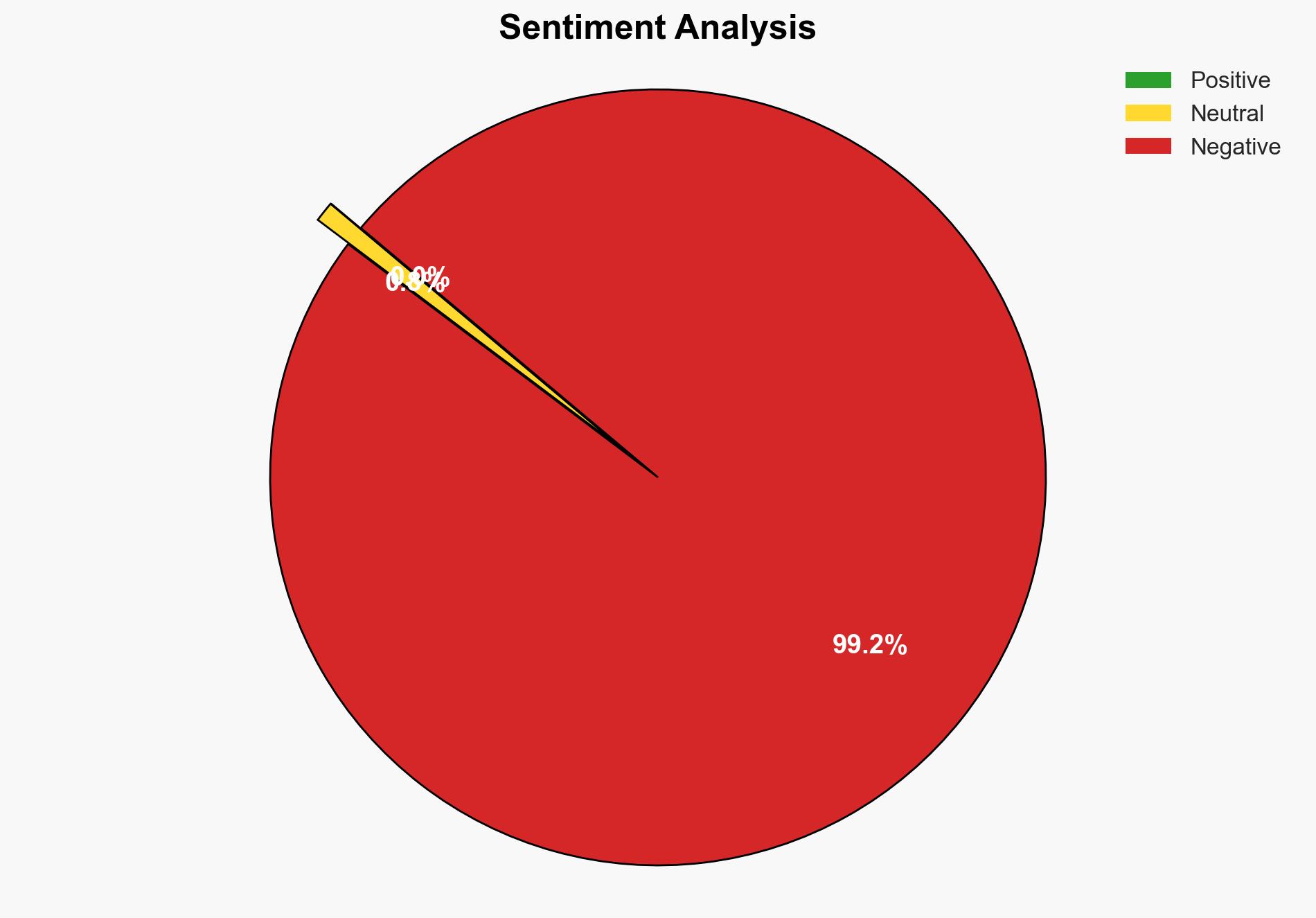A Peace Prize for Trump the Militarist
Published on: 2025-11-25
AI-powered OSINT brief from verified open sources. Automated NLP signal extraction with human verification. See our Methodology and Why WorldWideWatchers.
Intelligence Report:
1. BLUF (Bottom Line Up Front)
Based on the analysis, the most supported hypothesis is that former President Trump, despite his anti-interventionist rhetoric, pursued a militaristic foreign policy characterized by increased military actions and defense spending. This approach has strategic implications for U.S. foreign policy credibility and international relations. Confidence Level: Moderate. Recommended action includes a comprehensive review of military engagement policies and increased congressional oversight to ensure alignment with stated diplomatic goals.
2. Competing Hypotheses
Hypothesis 1: Trump’s foreign policy was primarily militaristic, characterized by increased military actions, defense spending, and a transactional approach to international relations. This is supported by evidence of increased airstrikes, military deployments, and budget allocations.
Hypothesis 2: Trump’s foreign policy was strategically anti-interventionist, with military actions serving as deterrents rather than indicators of militarism. This hypothesis is less supported due to the frequency and scale of military engagements during his term.
The first hypothesis is more likely due to consistent patterns of military engagement and budget increases, contrasting with the anti-interventionist claims.
3. Key Assumptions and Red Flags
Assumptions: The analysis assumes that military actions directly reflect presidential policy preferences. It also assumes that increased military spending equates to a militaristic stance.
Red Flags: Potential bias in interpreting military actions as purely aggressive without considering strategic deterrence. The possibility of deception in public anti-interventionist rhetoric versus actual policy execution.
4. Implications and Strategic Risks
The militaristic approach may undermine U.S. diplomatic credibility and strain alliances, particularly if perceived as inconsistent with public rhetoric. There is a risk of escalation in regions like the Middle East, potentially leading to broader conflicts. Economic implications include increased defense spending at the expense of other priorities.
5. Recommendations and Outlook
- Conduct a thorough review of military engagement policies to ensure alignment with diplomatic objectives and reduce the risk of unintended escalation.
- Enhance congressional oversight on military actions to maintain checks and balances.
- Best Scenario: A balanced foreign policy that effectively combines diplomacy and defense, enhancing U.S. global standing.
- Worst Scenario: Escalation of military conflicts leading to significant geopolitical instability.
- Most-likely Scenario: Continued military engagements with limited diplomatic progress, requiring strategic recalibration.
6. Key Individuals and Entities
Donald Trump, Marco Rubio, Henry Kissinger.
7. Thematic Tags
Structured Analytic Techniques Applied
- Cognitive Bias Stress Test: Expose and correct potential biases in assessments through red-teaming and structured challenge.
- Bayesian Scenario Modeling: Use probabilistic forecasting for conflict trajectories or escalation likelihood.
- Network Influence Mapping: Map relationships between state and non-state actors for impact estimation.
Explore more:
National Security Threats Briefs ·
Daily Summary ·
Support us





